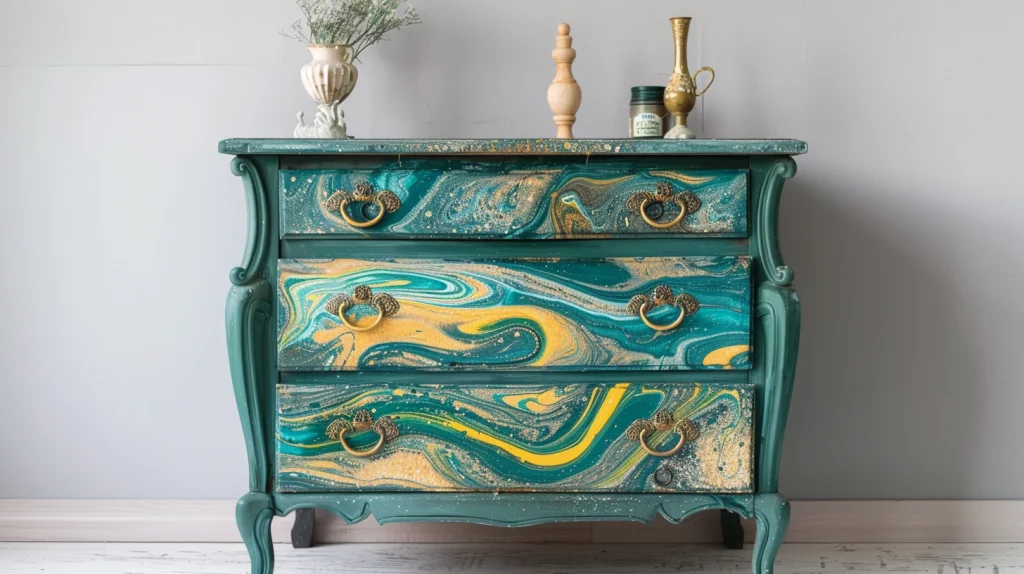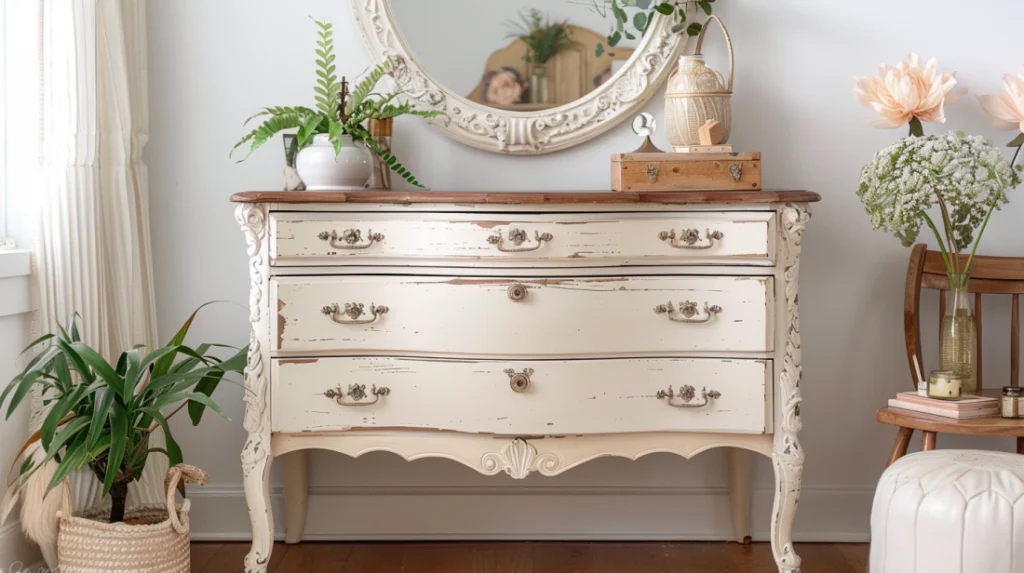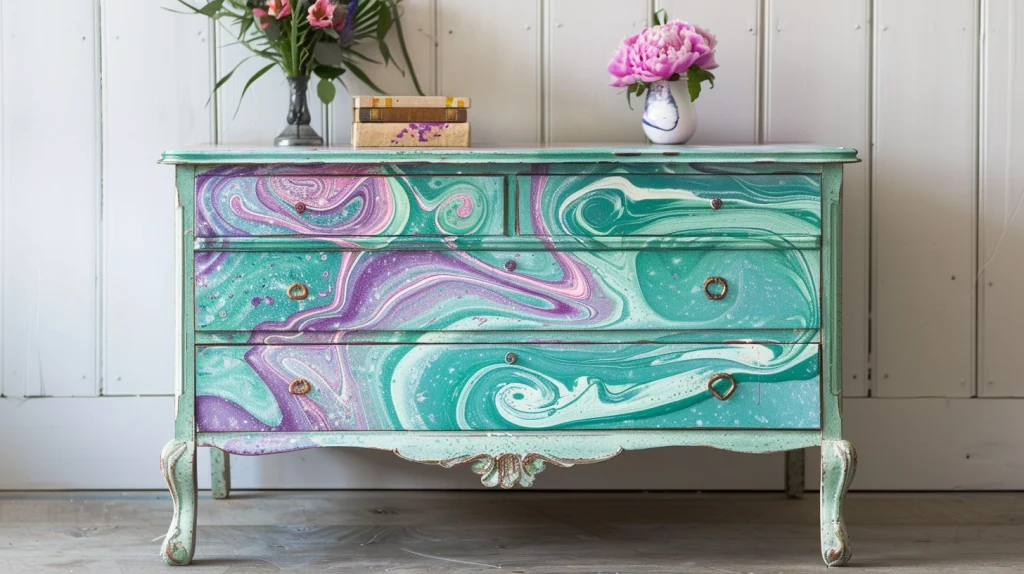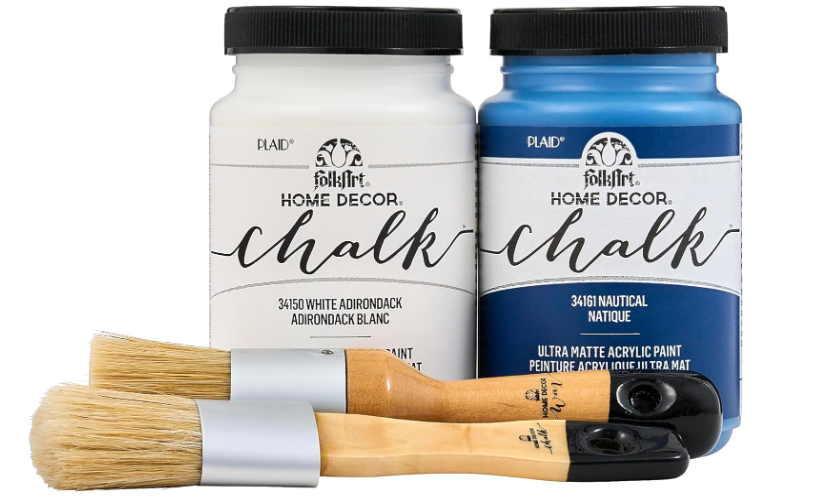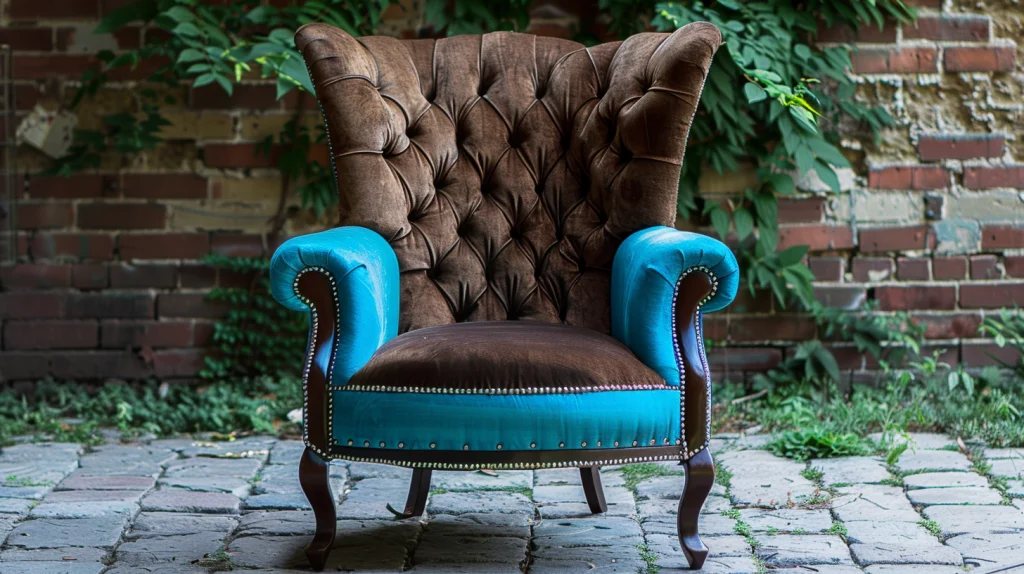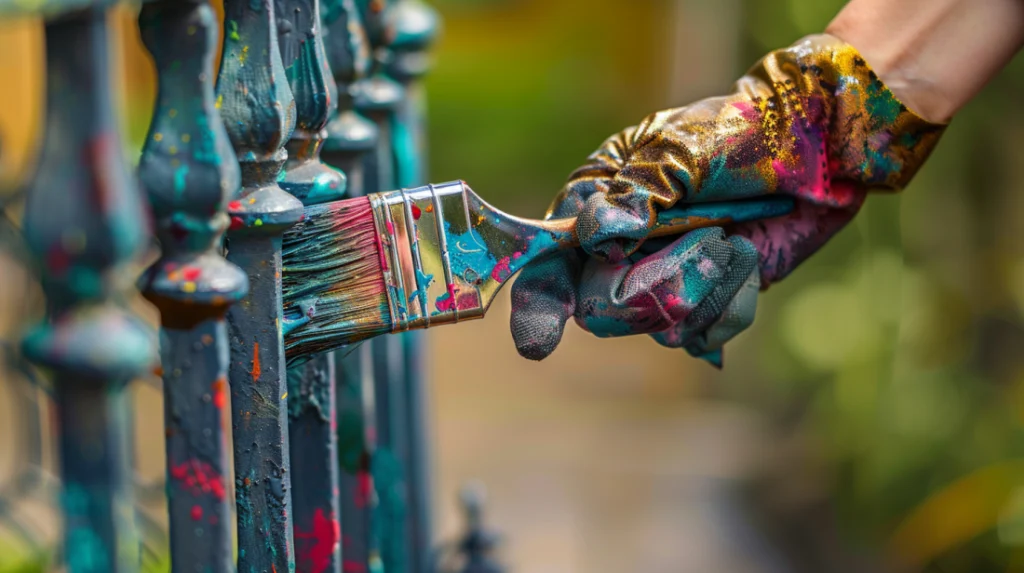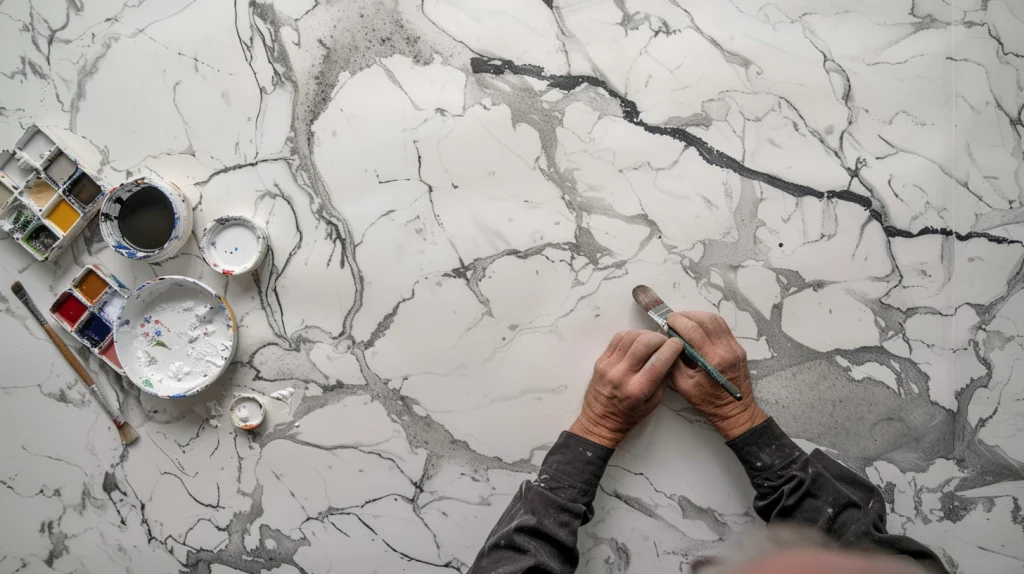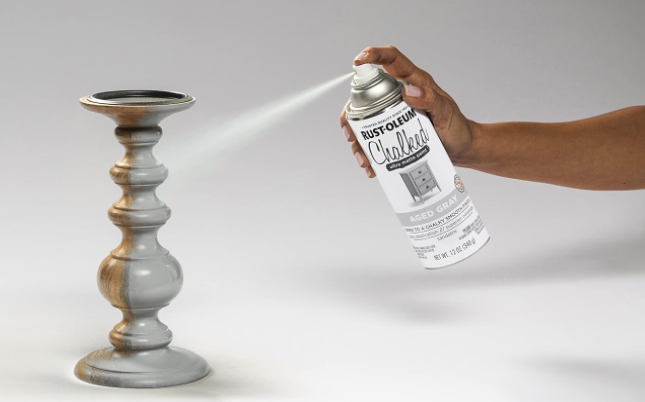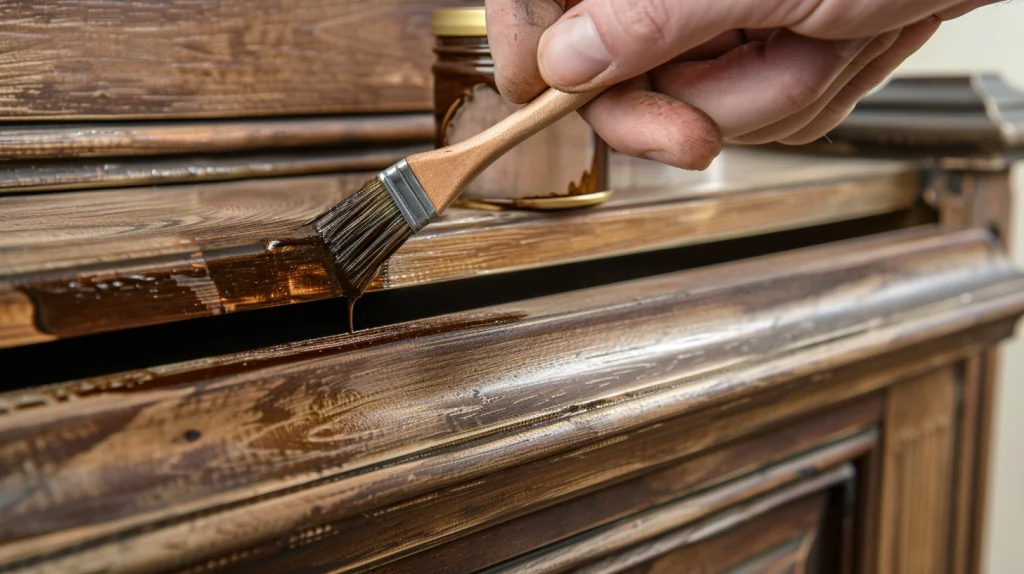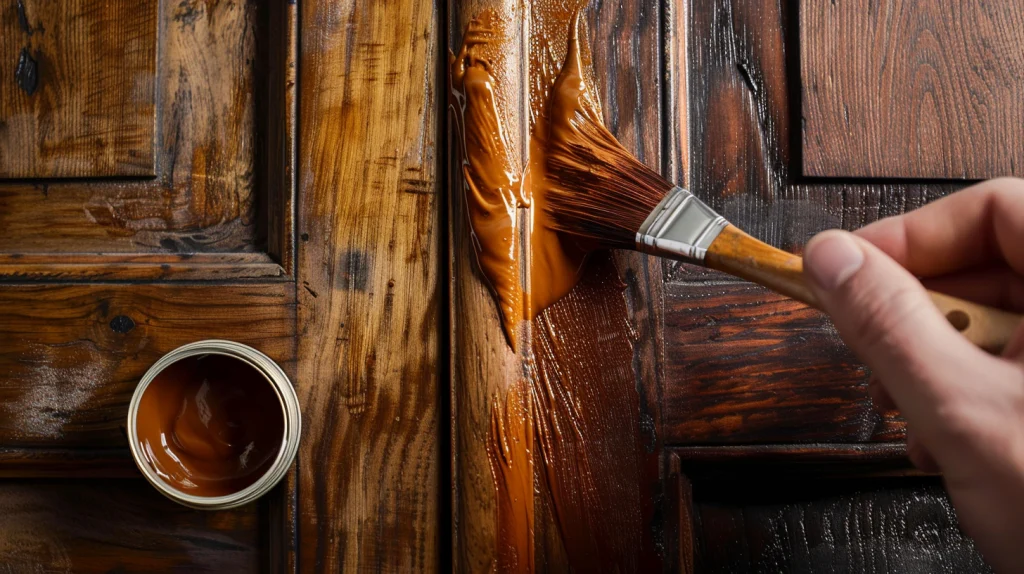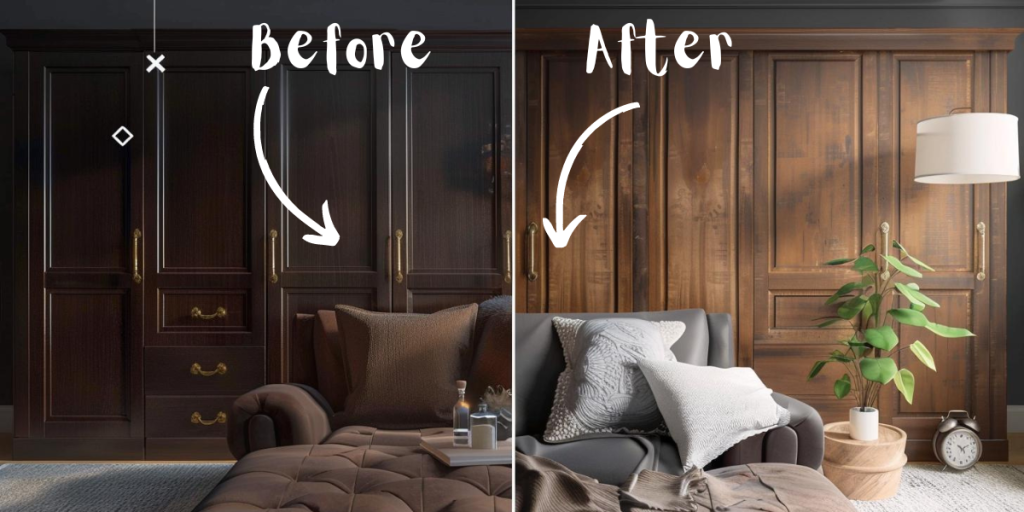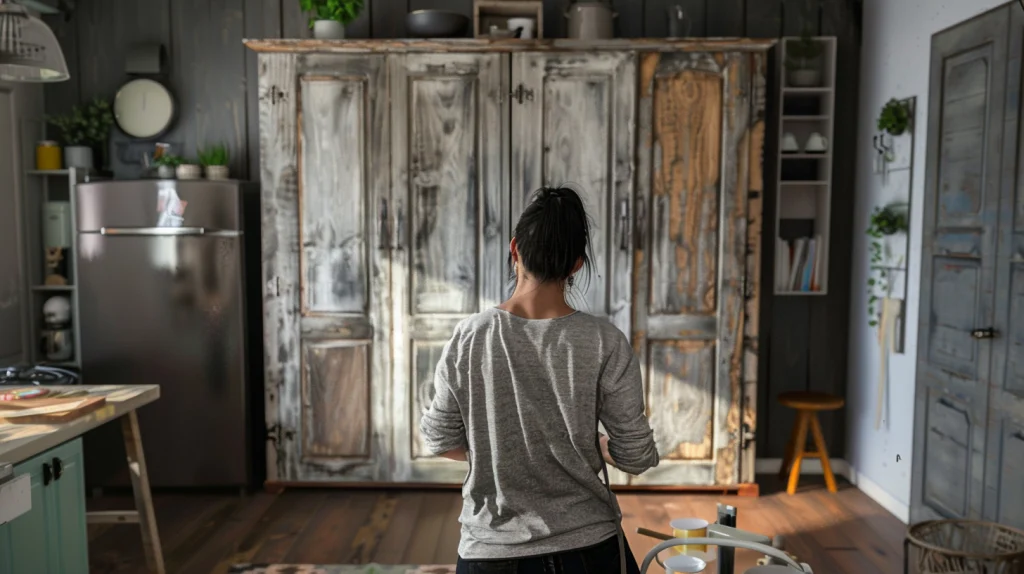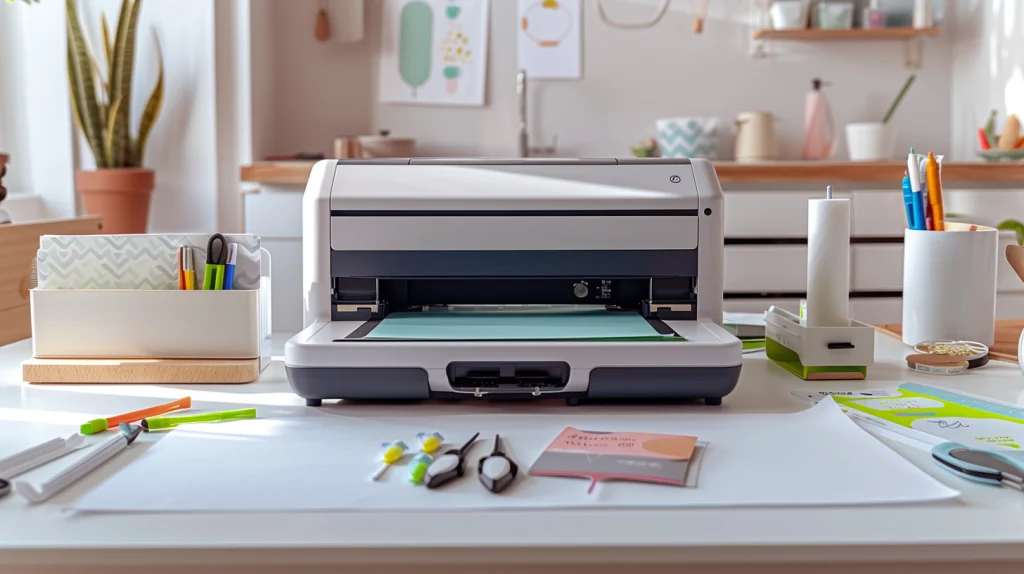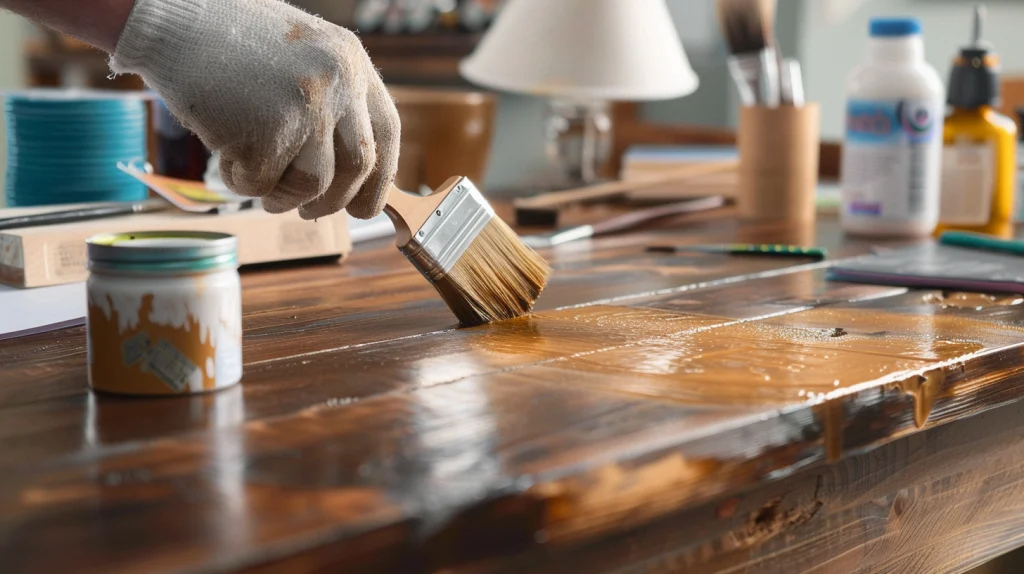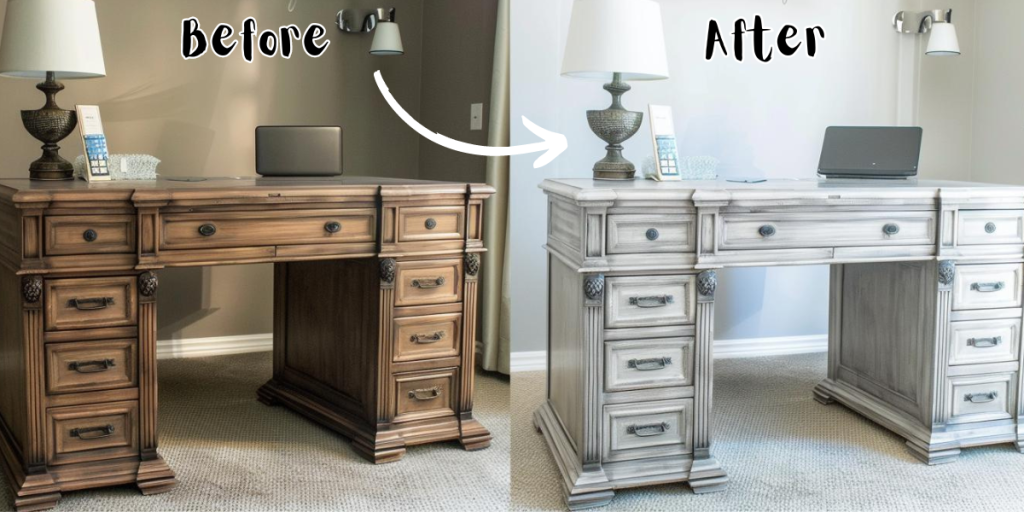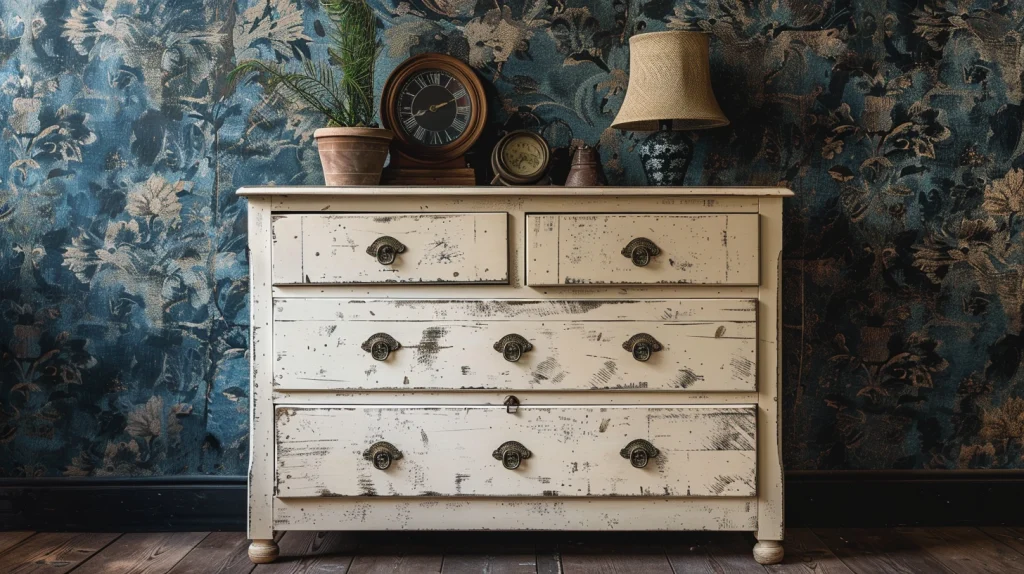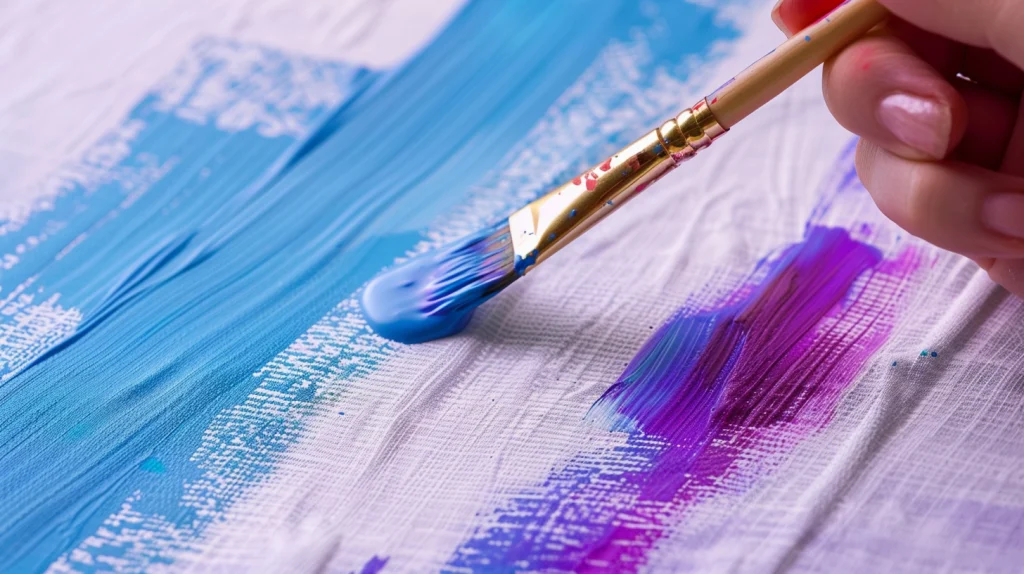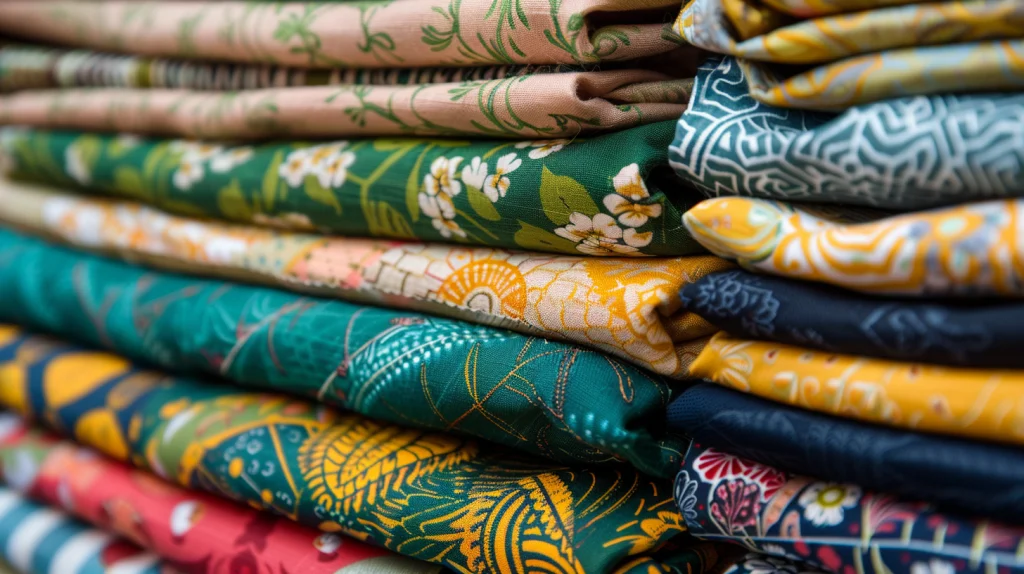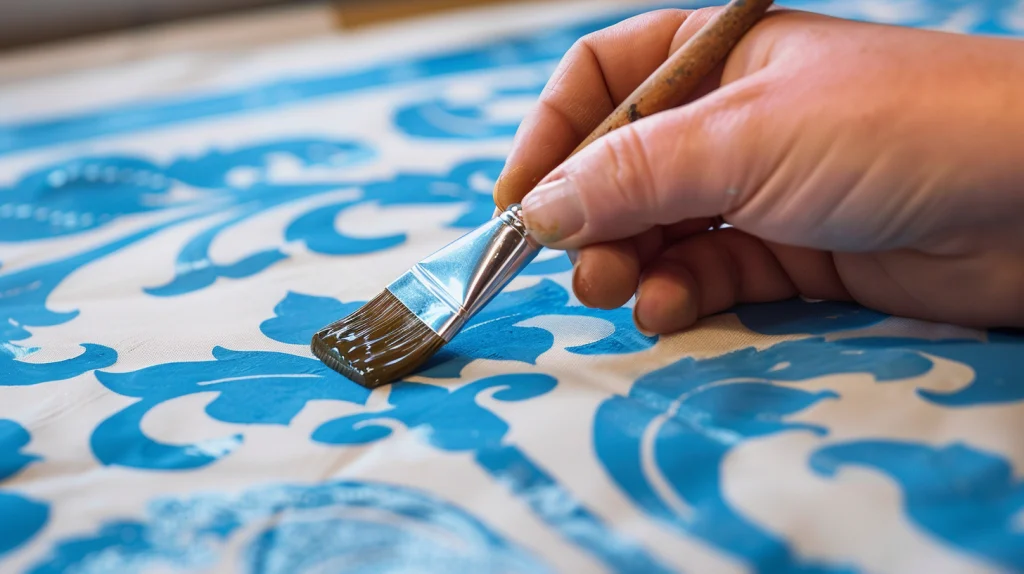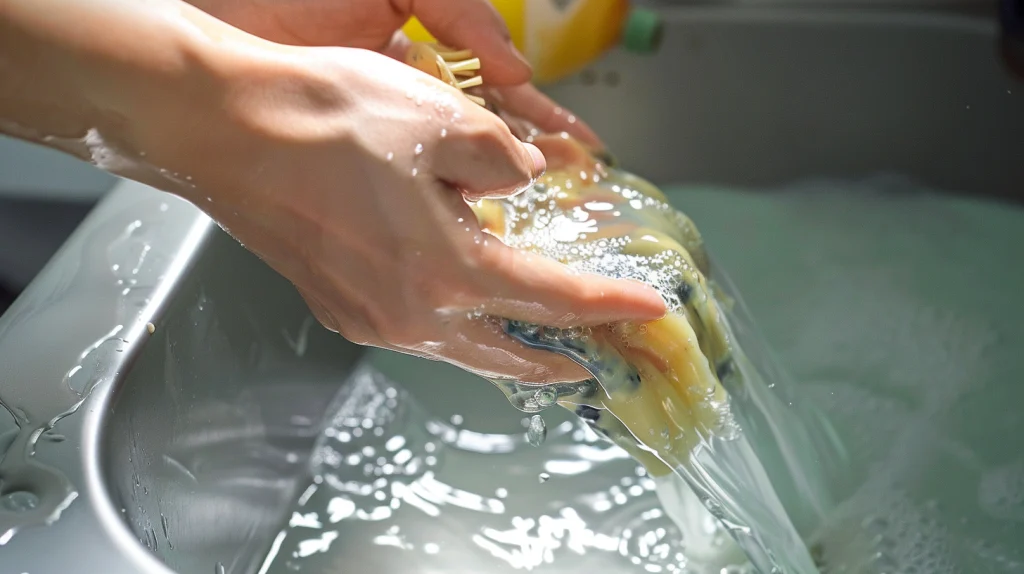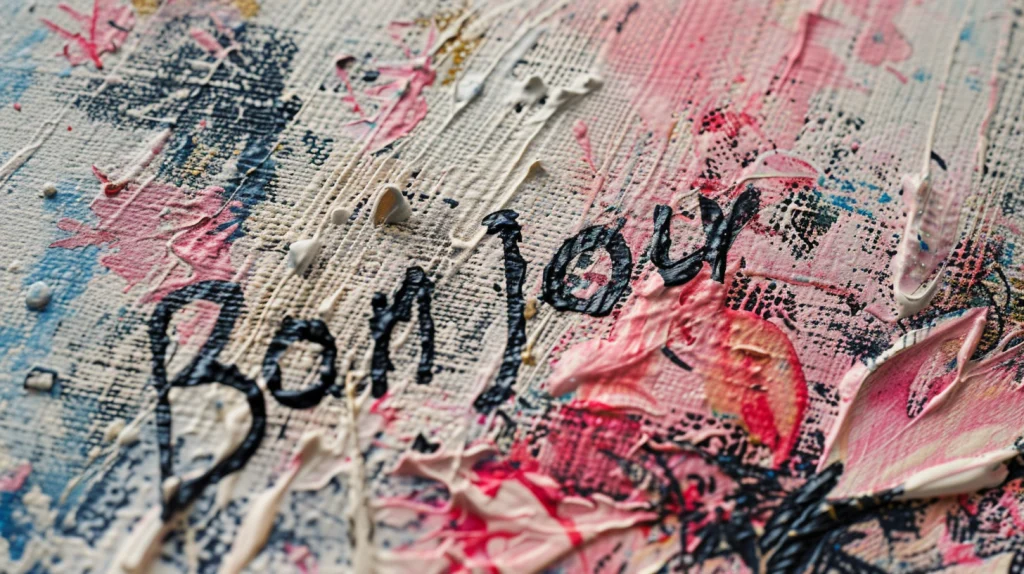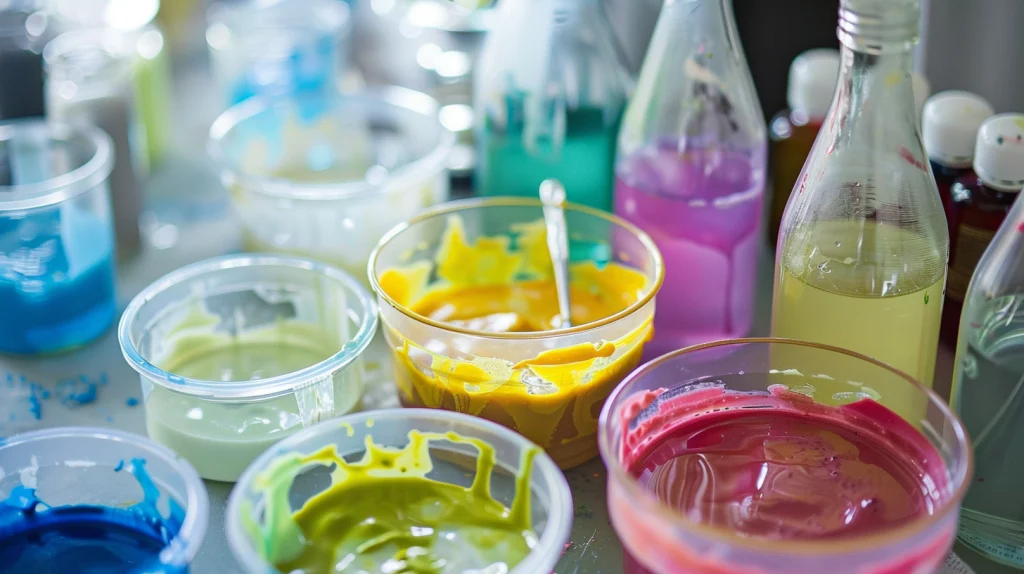Are you thinking about painting that old dresser and need some inspiration? I’ve got you covered! I love sharing my furniture makeovers, and today I’m excited to show you my favorite painted furniture ideas.
Each one comes with a step-by-step tutorial and a product list so you can transform your furniture like a pro.
Is Painting Furniture a Good Idea?
Yes, painting furniture can be a great idea! It allows you to give new life to old or outdated pieces, match your furniture to your current decor, and express your creativity.
Plus, it’s an affordable way to update your home without having to buy new furniture.
Can You Paint Over Old Paint on Furniture?
Yes, you can paint over old paint on furniture. However, for the best results, it’s important to properly prepare the surface.
This typically involves cleaning the furniture, sanding it lightly to create a smooth surface, and applying a primer before adding your new coat of paint. This preparation helps the new paint adhere better and ensures a smooth, long-lasting finish.
Creative Painted Furniture Ideas to Explore
Discover DIY inspiration for furniture made of wood, metal, and plastic. Before picking up your brush or spray can, browse through these ideas for tips, step-by-step guides, and links to full tutorials.
Using Chalk Paint
Chalk paint is a popular choice in the DIY-painted furniture trend. It’s user-friendly, adheres to various surfaces, and provides a charming matte finish.
Plus, it pairs wonderfully with other mediums like glaze and stain and can be used with stencils and transfers for one-of-a-kind designs. For a more detailed guide on using chalk paint, check out my other posts: How to Paint Over Chalk Paint, and if you want to learn more about Chalk Paint Techniques, read it here.
Try Milk Paint
Milk paint, similar to chalk paint in its results but with a different formulation, is also a favorite among crafters (you can even mix your own).
To achieve a cool distressed patina on a dresser, use a scraper on the almost dry surface to create dings and chips. You can also place tape on nearly dry milk paint and peel it off for a striped effect.
For more detailed instructions, check out these guides: How to Paint Over Milk Paint and Best Milk Paint.
Paint Upholstered Furniture
Painting upholstered furniture can be a creative and budget-friendly way to give old pieces a new look. Fabric paint or diluted acrylic paint works well for this type of project.
To begin, clean the fabric thoroughly and let it dry completely. Then, mix your paint with a fabric medium to ensure flexibility and softness. Apply the paint in thin, even coats with a brush or spray, allowing each layer to dry before adding the next.
Lightly sand between coats for a smooth finish.
Try the “Pour-On” Method
The “pour-on” method is a unique and eye-catching technique for transforming furniture. This method involves pouring a mixture of paint and pouring medium directly onto the surface of your piece.
Begin by protecting your workspace with plastic sheeting or a drop cloth. Mix your desired colors of paint with a pouring medium in separate cups.
Slowly pour the mixtures onto the furniture, letting the colors flow and blend naturally. Use a heat gun or hairdryer to manipulate the paint and create interesting patterns. Allow the piece to dry completely before sealing with a clear topcoat.
Painting Metal, Plastic, and Fiberboard
Yes, you can paint metal, plastic, and fiberboard. For metal, start by cleaning the surface and removing any rust, then use a metal primer before applying your paint.
For plastic, clean the surface thoroughly and use a plastic-specific primer to ensure adhesion. Fiberboard should be sanded lightly, primed with a suitable primer, and then painted. Always use the appropriate type of paint for each material to achieve the best results.
Color Wash Furniture
If you love the natural warmth of wood but want to add a bit of flair, try a color wash technique. This method works well on both raw and stained wood, making it perfect for larger pieces like armoires or hutches. I have another post about how to tempera paint on wood.
Thin chalk paint with water, brush it onto the wood, and then wipe it off. This allows the beauty of the wood grain to shine through while adding a subtle hint of color.
Memphis Style
If you’re looking to add a bold and playful touch to your furniture, try Memphis-style painting. This vibrant and eclectic design trend involves using bright colors, geometric shapes, and striking patterns.
Start by selecting a few contrasting colors and use painter’s tape to create sharp lines and shapes on your furniture piece. Apply the paint in sections, allowing each color to dry before moving on to the next.
Finish with a clear topcoat to protect the design and give your furniture a glossy, modern look. The result is a fun and eye-catching piece that makes a statement in any room.
Faux Marble
Transform your furniture with the elegant look of marble using a faux marble painting technique. Start by painting the surface with a base coat of white or light gray paint and let it dry completely.
Next, mix darker shades of gray and black paint to create the marble veins. Use a fine brush or a feather to lightly drag the darker paint across the surface in a veining pattern, mimicking the natural lines found in real marble.
Soften the lines by dabbing them with a damp sponge to blend the colors slightly. Once you’re satisfied with the marble effect, let the paint dry and finish with a high-gloss clear topcoat to seal and protect the surface, giving it a realistic marble shine.
This technique can elevate the look of any piece, adding a touch of sophistication and luxury.
Painting Wrought Iron Furniture
Revitalize your wrought iron furniture with a fresh coat of paint. Start by thoroughly cleaning the surface to remove any dirt, rust, or old paint.
Use a wire brush or sandpaper to smooth out any rough spots and ensure a clean, rust-free surface. Once cleaned, apply a rust-inhibiting primer to prevent future rusting and to help the paint adhere better.
After the primer has dried, choose a high-quality, exterior-grade paint suitable for metal surfaces. Spray paint works well for wrought iron, providing an even coat without brush marks.
Apply the paint in thin, even layers, allowing each coat to dry before applying the next. Finish with a clear topcoat for added protection and durability. This process will give your wrought iron furniture a fresh, new look and extend its lifespan.
Decoupage Furniture
Decoupage is a creative way to personalize and beautify your furniture. Start by selecting your piece of furniture and ensuring its surface is clean and smooth. Choose your decorative paper or fabric—this could be anything from wrapping paper to old maps or fabric scraps. Cut your material into desired shapes or patterns.
Apply a layer of decoupage glue or Mod Podge to the furniture surface where you want to place your decoration. Carefully lay the paper or fabric onto the glued area, smoothing out any wrinkles or bubbles. Once all your pieces are in place, apply another layer of decoupage glue over the entire surface to seal it, ensuring the edges are well adhered.
Allow the glue to dry completely, then apply additional coats if necessary, sanding lightly between coats for a smooth finish. Finish with a clear sealer to protect your design and give your furniture a polished look. Decoupage can transform a plain piece into a unique and eye-catching addition to your home décor.
Spray Paint for Wood Furniture
Spray painting wood furniture is a quick and effective way to give it a fresh, new look. Start by cleaning the furniture thoroughly to remove any dust, dirt, or grease.
Lightly sand the surface with fine-grit sandpaper to ensure the paint adheres well. Wipe down the furniture with a damp cloth to remove any sanding dust and let it dry completely.
Apply a coat of primer suitable for wood surfaces to achieve an even color and enhance the durability of the paint. Once the primer is dry, choose a high-quality spray paint designed for wood.
Hold the can about 10-12 inches away from the surface and apply the paint in thin, even coats, using a sweeping motion. Avoid heavy coats to prevent drips and runs.
Allow each coat to dry before applying the next one. Finish with a clear topcoat to protect the paint and add durability. For more detailed tips and recommendations, check out Best Chalk Spray Paint and Spraying Chalk Paint.
Distressed Furniture Diy
Creating distressed furniture is a popular DIY project that adds character and a vintage feel to your pieces. Start by selecting a piece of wood furniture and cleaning it thoroughly to remove any dust, dirt, or grease.
Lightly sand the surface with fine-grit sandpaper to ensure the paint adheres well. Apply a base coat of paint if you want a specific color to show through the distressed areas and let it dry completely.
Next, rub candle wax or Vaseline on areas where you want the base coat to show through, which helps create a distressed look by preventing the topcoat from adhering in those spots.
Apply the topcoat of paint over the entire piece and let it dry. Once the paint is dry, use sandpaper to gently sand the areas where you applied the wax or Vaseline, revealing the base coat and creating a distressed effect.
Finally, wipe down the piece to remove any dust and seal it with a clear topcoat for protection.
Paint Furniture to Match Decor
Painting furniture to match your decor is a great way to create a cohesive look in your home. Start by selecting the piece of furniture you want to update.
Clean the surface thoroughly to remove any dust, dirt, or grease, and lightly sand it with fine-grit sandpaper to ensure the paint adheres well. Choose a paint color that complements your existing decor. Pick a shade from your room’s color palette or opt for a neutral color that blends well with various styles.
Apply a primer suitable for the furniture’s material and let it dry completely. This step helps to achieve an even color and enhances paint durability. Once the primer is dry, paint the furniture with your chosen color, using even strokes and thin coats to avoid drips and runs. Allow each coat to dry before applying the next.
After achieving the desired coverage, seal the paint with a clear topcoat to protect the finish and add durability. This process will ensure that your painted furniture not only looks great but also stands up to daily use, perfectly matching your decor and enhancing the overall aesthetic of your space.
Conclusion
Painting furniture is a fantastic way to give new life to old pieces, match your decor, and express your creativity. Whether you’re using chalk paint, trying milk paint, or exploring unique techniques like decoupage or faux marble, the possibilities are endless.
So grab your paintbrush, pick your favorite idea, and get started on creating beautiful, personalized furniture for your home!
